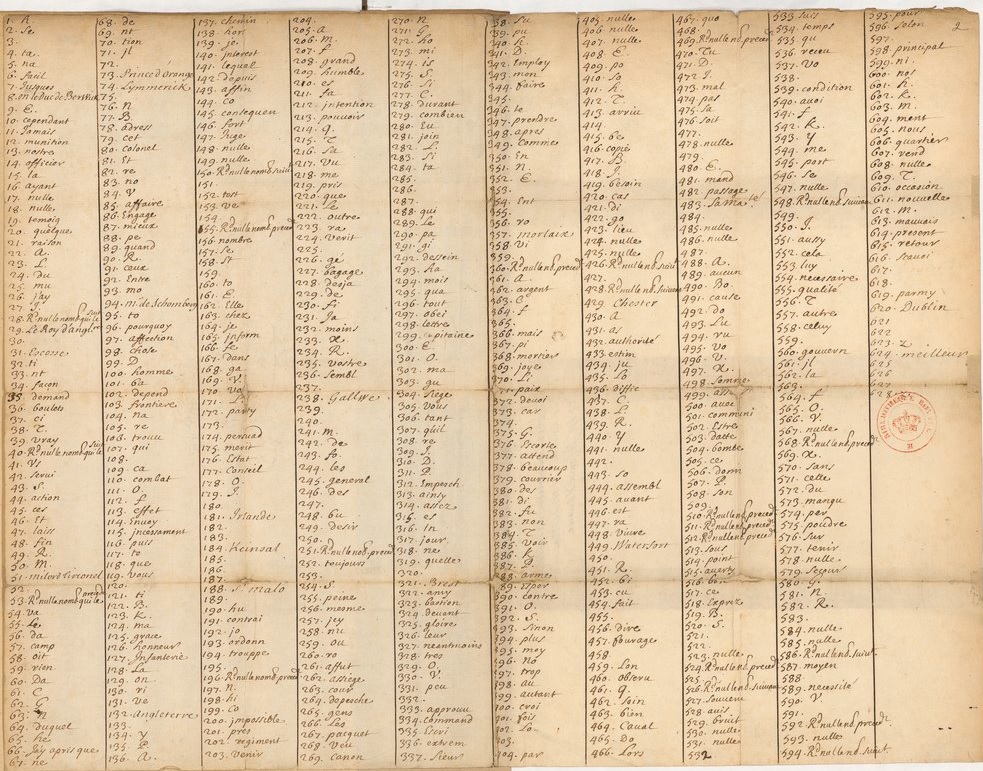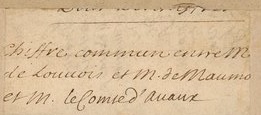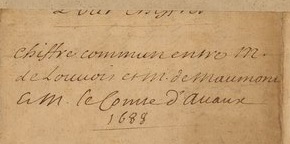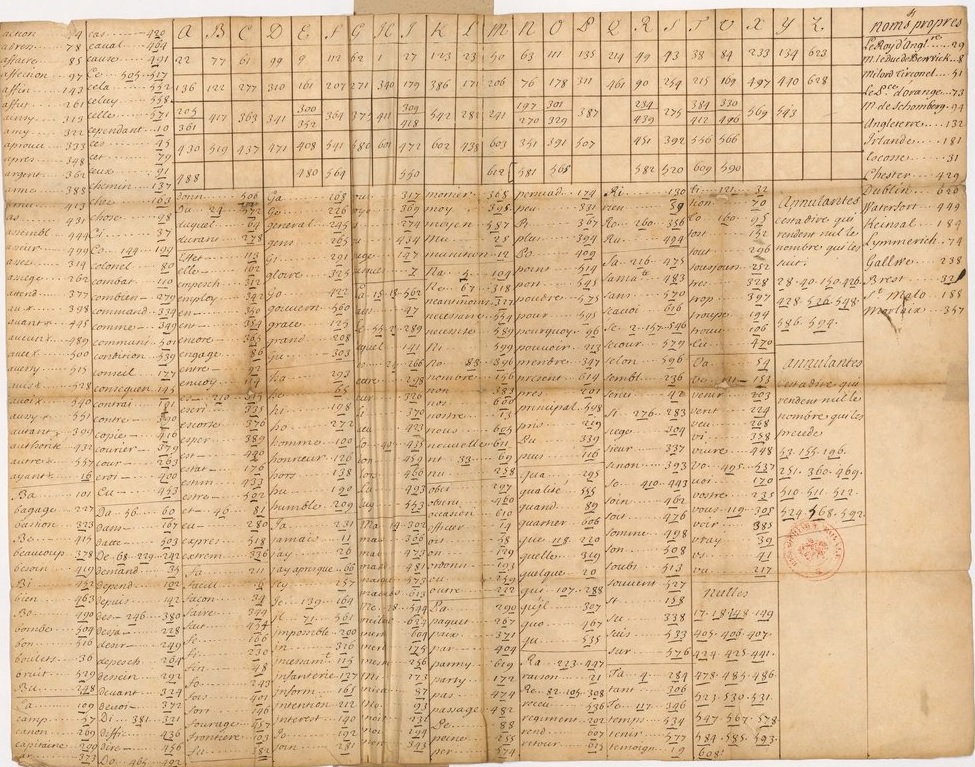A two part codebook from 1688, authentic tables
( )
(
)
( )
)
The Louis XIV's codebooks
- Introduction (introduction)
- The invention of the great chipher (invention)
- Analyse of Louis XIV's codebooks (analyse)
- Cryptanalyse (break)
- Codebooks examples
(examples)
- A codebook from 1643
- A one part codebook from 1676
- A two part codebook from 1676 (the first one?)
- A one part codebook from 1684
- Messages encoded by a two part codebook from 1685
- A two part codebook from 1688
- Messages from 1690, an unpublished codebook?
- The codebook from 1691 broken by Bazeries
- A codebook from 1701
- The Man in the Iron Mask (mask)
Introduction
In the archives of the Bnf (National Library of France), you can access many encrypted documents as well as code tables. On the Gallica site (the Bnf's web showcase) some of these archives are accessible online.
In the document "Recueil de chiffres diplomatiques (1688-1713)", one can find ciphering and deciphering tables of codes of the French government of the time of Louis XIV.
The following tables date from 1688 and allowed exchanges between Mr de Louvois and Mr de Maumont and the Earl of Avaux.
Codebook description

(the previous images give the decrypting and encrypting tables of the codebook).

|

|
In all, the codebook has 628 codegroups.
Here is the structure of this code:
- Letters: each one can be coded by multiple codegroups (a : 22, 136, 205, 361, 436, 488). Vowels are coded in 6 copies, consonants are coded between 2 and 6 copies.
- The syllables : ca, ce, ci, co, cu, … da, de, di, do, du, … Some syllables being coded by several codegroups (ca : 505, 517).
- Frequent words (adverbs, adjectives, pronouns, common nouns, ...): celuy, celles, cependant, ces, cet, chemin, …
- Incomplete words (prefix): gouvern (560), inform (105). For example the prefix "inform" can be the beginning of the following words: informe, informer, informera, information, informations, …
- Suffixes: oit (58), tion (70)
- Expressions: "J’ai apris que" (66)
- Proper nouns (persons, cities, countries, …): Le Prince d’Orange (73), Le Duc de Berwick (8); cities: Lymmerick (74), Dublin (620); countries : l’Ecosse (31), l’Irlande (181), l’Angleterre (152), ...
- Null groups (17, 18, 148, 149, … [en tout 19 groupes]). These null groups served mainly for punctuation and to conceal the beginning and end of the message. They most often occurred in multiple copies, for example, the beginning of the message was preceded by three (or more) null groups.
- Groups to frame groups you want to cancel: groups preceding the groups to cancel: 53, 155, … groups that follow the groups to cancel: 20, 40, 140, … Personally, I have never seen their use.
References
- BnF - Gallica - Recueil de chiffres diplomatiques (1688-1713) (Web)
